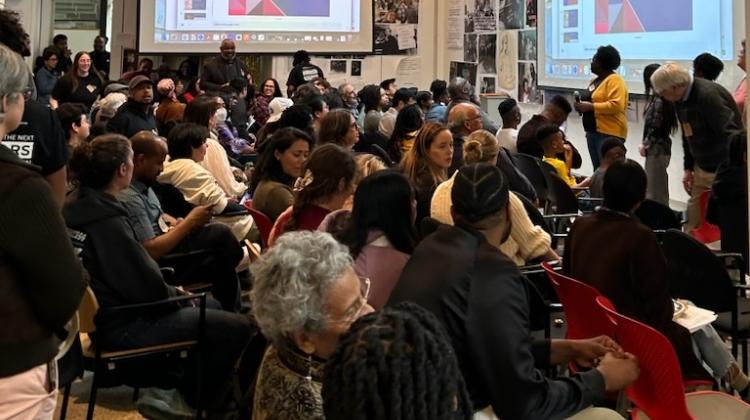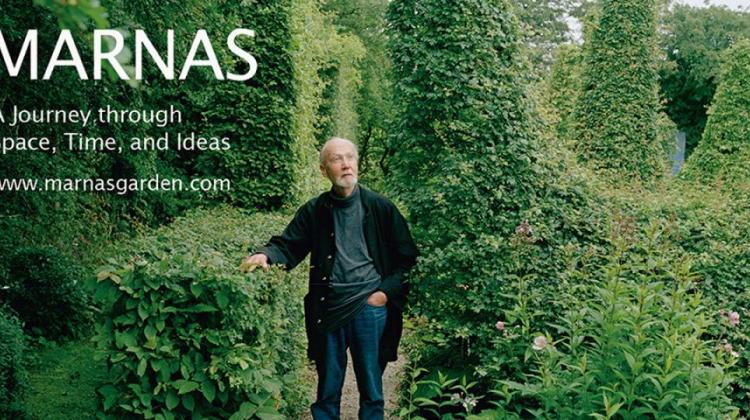Anne Whiston Spirn
Anne Whiston Spirn is the Cecil and Ida Green Distinguished Professor of Landscape Architecture and Planning at MIT. The American Planning Association named her first book, The Granite Garden: Urban Nature and Human Design (1984), as one of the 100 most important books of the 20th century and credited it with launching the ecological urbanism movement.
Since 1987, Spirn has directed the West Philadelphia Landscape Project (WPLP), an action research project whose mission is to restore nature and rebuild community through strategic design, planning, and education programs. Through experimental projects, WPLP seeks to demonstrate how to create human settlements that are healthier, economical to build and maintain, more resilient, more beautiful, and more just. A key proposal of the West Philadelphia Landscape Project is to manage the West Philadelphia’s Mill Creek watershed as part of a broad approach to improving regional water quality and as a strategy to secure funds to rebuild neighborhoods. In 1999, a White House summit for leading "Scholars and Artists in Public life" cited WPLP as a "Model of Best Practice." For more on WPLP, see www.wplp.net and www.wplp.net/timeline.
WPLP employs landscape literacy as a cornerstone of community development and served as a laboratory for Spirn’s second book, The Language of Landscape (1998). The book sets out a theory of landscape and aesthetics that takes account of both human interpretive frameworks and natural process. It argues that landscape is a form of language with its own grammar and metaphors, and that we endanger ourselves by failing to learn and use this language.
In recent books, Spirn has continued to develop the concept of landscape literacy as part of the larger subject of visual literacy and visual thinking. Her award-winning book, Daring to Look (2008), presents photographs and reports from the field by the great photographer Dorothea Lange in 1939 and reflects on how the dynamics she saw and recorded in the Great Depression are still shaping American lives and landscapes. Spirn’s most recent book, The Eye Is a Door: Landscape, Photography, and the Art of Discovery (2014), is about seeing as a way of knowing and photography as a way of thinking.
Since the mid 1990s, Spirn has explored the role of the World Wide Web as a platform for teaching and as a forum for experimentation and expression. She continues to explore the role of photography, multimedia, and the Web in qualitative research.
Prior to MIT, Anne Whiston Spirn taught at Harvard University, where she was director of the Landscape Architecture Program, and at the University of Pennsylvania, where she was chair of the Department of Landscape Architecture and Regional Planning and Director of the Urban Studies Program.
In 2018 Spirn received the National Design Award and the Sir Geoffrey Jellicoe Medal. In 2001, she was awarded Japan’s International Cosmos Prize for “contributions to the harmonious coexistence of nature and mankind.” Her homepage is a gateway to her work and activities: www.annewhistonspirn.com
Courses
4.215J/11.309 Sensing Place: Photography as Inquiry
This course explores photography as a disciplined way of seeing, as a medium of inquiry and of expressing ideas. Readings, observations, and photographs form the basis of discussions on landscape, light, significant detail, place, poetics, narrative, and how photography can inform research, design, and planning, among other issues. The class is highly recommended for students who want to employ visual methods in their thesis
Students keep a journal of writings and images throughout the semester and develop a portfolio of photographs that investigate the qualities of a particular place, the processes that shape it, and the systems that sustain it, sequenced as a web of narratives. Each student selects a site for the focus of their work in the course. The place may be urban, suburban, or rural; it may be a studio site or place studied in another class. Work is in digital format. Images are projected for class discussion and posted in an online gallery designed and maintained by each student.
Students must have access to a camera (a cell phone camera is acceptable). Although this is not a lab class, the course includes an introduction to digital printing and the potential for adjusting contrast, hue, saturation, and other qualities. Prior experience with Adobe Photoshop and web authoring is recommended, but not required.
Class meets on Wednesdays from 2:00-6:00, including occasional discussion and lab sessions from 5:00-6:00. Reviews last for the full class period from 2:00-6:00; students are required to attend the entire review and to participate in the discussion of other students' work.
4.213J/11.308J Ecological Urbanism
Ecological Urbanism weds the theory and practice of city design and planning, as a means of adaptation, with the insights of ecology (the study of the relationships among living organisms and their environment and the processes that shape both) and other environmental disciplines. Ecological urbanism is critical to the future of the city and its design: it provides a framework for addressing challenges that threaten humanity, such as climate change, rising sea level, declining oil reserves, rising energy demands, and environmental and social justice, while fulfilling human needs for health, safety, and welfare, meaning and delight.
Green Gentrification: Dilemma and Solutions
This year, the class will focus on "green" gentrification, a process whereby public investment in green infrastructure and other environmental improvements in low-income neighborhoods attracts wealthier residents and leads to speculation, increase in property values, and displacement of low-income residents. We will seek solutions to the dilemma: how to improve a place and, simultaneously, protect the long-term tenure of low-income residents.
Green gentrification is happening across the US, but we will concentrate on Philadelphia, where Green City, Clean Waters, a landmark green infrastructure program, may threaten low-income communities. After more than a half century of redlining and disinvestment, capital is flowing into West Philadelphia's low-income, predominantly African-American neighborhoods, and owners are losing their homes through predatory lending (reverse-redlining) and unscrupulous practices of aggressive speculators. This private investment is happening simultaneously with public investment in green infrastructure projects designed to improve environmental quality and provide local amenities, projects that are seen by low-income residents as a signal that invites wealthier newcomers. These neighborhoods are in dire need of investment, but how can this be accomplished without displacing families who have made their homes there for generations.
Working with community partners, the class will develop an action plan to address this crisis: a plan for public investment in green infrastructure, which simultaneously protects the tenure of current residents and/or the prospects for youth. The class will build on more than three decades of action research in the West Philadelphia Landscape Project and the experience of local community activists. We will make at least four field trips to West Philadelphia with local residents and public officials as guides, using a combination of Zoom and Google Street View.
We will begin the semester with a brief overview of the historical and ecological context for the catastrophe that is facing low-income homeowners in the face of "green" gentrification and rampant property speculation, followed by a review of programs that Philadelphia and other cities have developed to address this problem. Finally, we will propose a plan for action in the Mill Creek neighborhood, where Rebuild Philadelphia plans to implement a major green infrastructure project that will combine stormwater detention and recreation. This site has historic importance: it is on the buried floodplain of Mill Creek, where, in 1961, a cave-in along the Mill Creek sewer killed several people and resulted in the destruction of 111 homes. Planning for this project will begin this spring, and class proposals will be presented to Rebuild Philadelphia.







